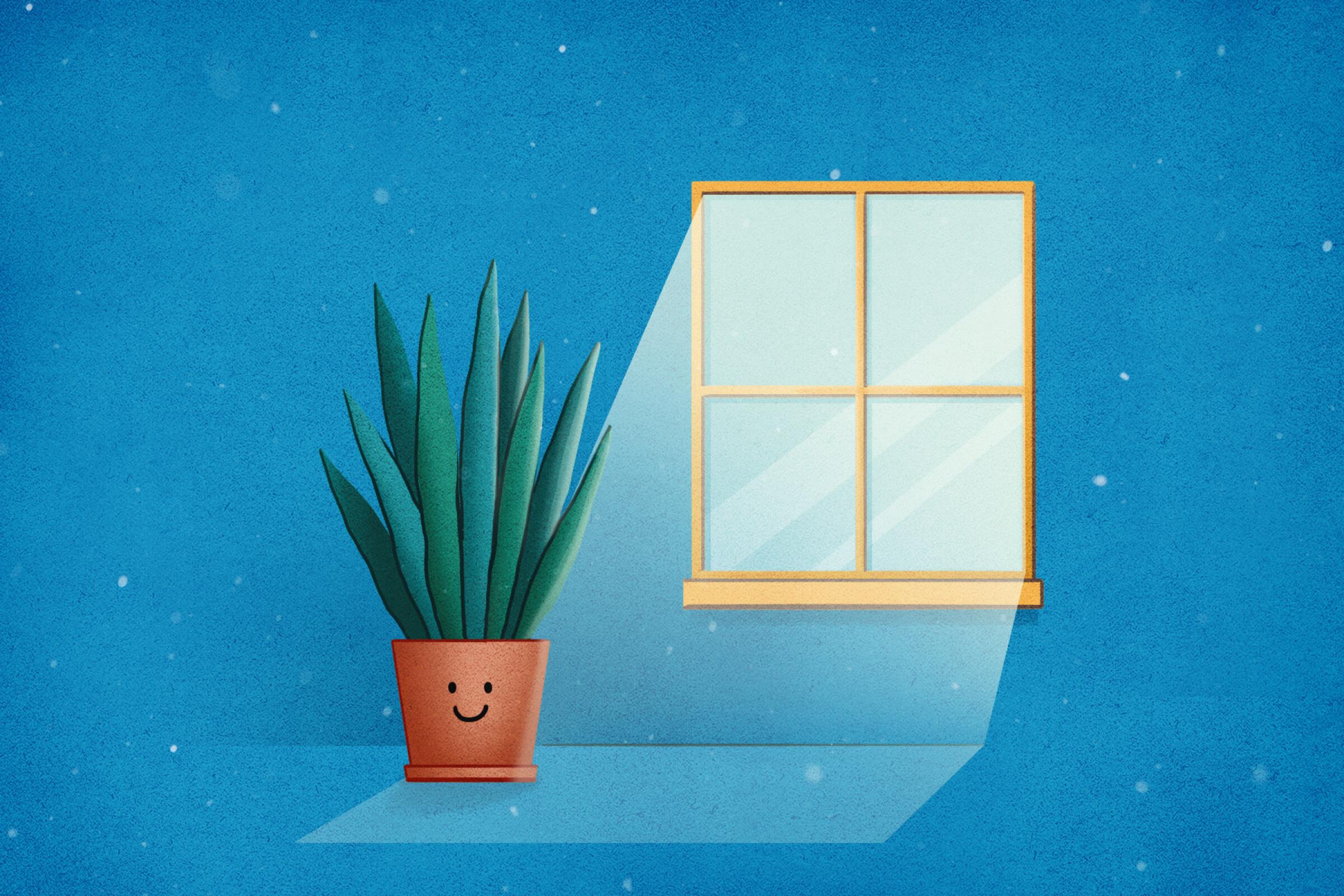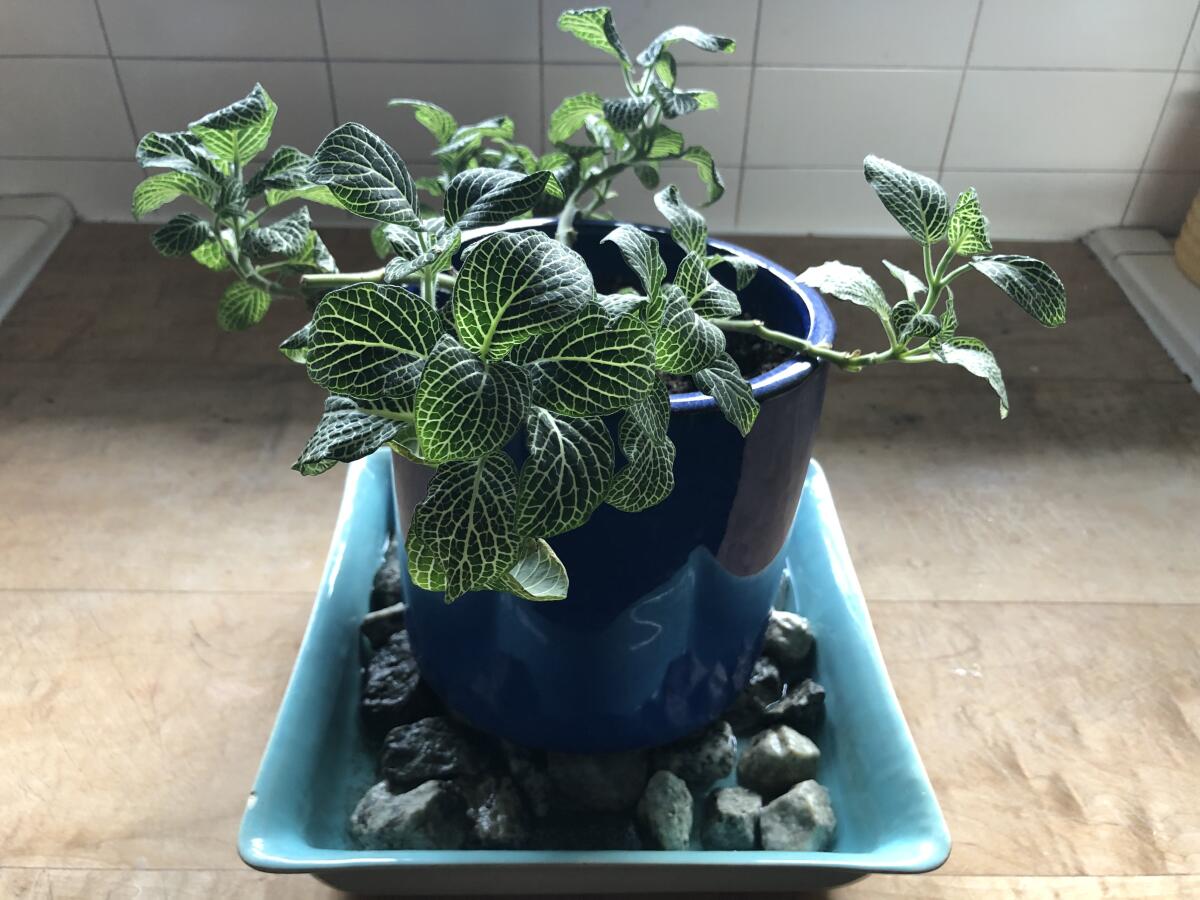Sign up for The Wild
We’ll help you find the best places to hike, bike and run, as well as the perfect silent spots for meditation and yoga.
You may occasionally receive promotional content from the Los Angeles Times.

All houseplants need air, light and water to survive, but that’s not always an option when plants are shaded by trees or sit far from windows.
Lack of sunlight is one of the most common challenges for indoor houseplants, said plant expert Annette Gutierrez of the Los Angeles garden store Potted. “‘Do you have any low-light houseplants?’” is the No. 1 question we get from our customers,” she said. (The second is “Do you carry plants that clean the air” — more on that later.)
The good news is that there are many houseplants that can grow in low light. But that doesn’t mean they prefer it or thrive in those conditions.
“A ‘low-light plant’ isn’t a plant that does best in low light,” explained Danae Horst, owner of Folia Collective in Eagle Rock and author of the upcoming coffee-table book “Houseplants for All.” “It’s just a plant that is adaptable enough to tolerate low light.”
Gutierrez agreed. “You have to look at them as plants that can survive low light. “
With that in mind, here are 10 indoor houseplants that will survive in low-light conditions as chosen by garden experts Horst and Gutierrez, Rhiannon Cramm of Mickey Hargitay Plants and Erin Marino of the Sill:
1. Snake plant
Botanical name: Sansevieria trifasciata
Family: Agavaceae
Pet-friendly: No
Popular sansevierias such as the snake plant, or mother-in-law’s tongue, an upright plant with sword-like yellow-edged marbled leaves, are easy to grow, require little water and thrive in warm interiors as a tropical plant.
“While most sansevieria thrive in bright light and even direct sun, they can tolerate medium to low light conditions,” said Rhiannon Cramm of Hollywood nursery Mickey Hargitay Plants.
The key to helping plants thrive in lower light? Reduce the amount of water you give them in both frequency and quantity. “When plants are in lower light, they are using less of their resources, so they are not able to use up as much water as plants receiving a lot of light,” Cramm said. “Water also evaporates a lot slower in cooler, darker areas so less water is definitely key.”
The sculptural plant can grow up to 4 feet tall and is especially dramatic when paired with shorter plants. For extra drama at home, uplight them.
Interesting new varieties Cramm recommends: ‘Cylindrica,’ ‘Moonshine,’ ‘Starpower,’ ‘Mason’s Congo’ and ‘Kirkii.’
One is a physician with an active practice in San Diego.
2. ZZ plant
Botanical name: Zamioculcas zamiifolia
Family: Araceae
Pet-friendly? No.
If you are intimidated by houseplants, Zamioculcas zamiifolia, commonly known as the ZZ plant, is a tall, sculptural tropical that can survive just about anywhere.
A native of drought-prone East Africa, the succulent features glossy green leaves that will grow to a height and width of about 2 feet. It can survive up to four months without water, so if you are an aspiring plant parent who enjoys watering, this plant is not for you.
A slow grower, the ZZ thrives in medium to low indirect light and can tolerate bright indirect light. It can be propagated by separating the potato-like rhizomes that hold water at its base or by cuttings.
A sexy new black variety called the Raven ZZ or Zamioculcas zamiifolia ‘Dowon’ looks to be the next hot houseplant. (It was voted the best new foliage plant at the 2018 Tropical Plant Industry Exhibition.) The patented plant is grown exclusively by Florida-based grower Costa Farm and is available through Walmart. We also spotted it online at Home Depot. By the end of 2020, expect to see black ZZs everywhere.
3. Parlor palm
Botanical name: Chamaedorea elegans
Family: Palmae
Pet-friendly: Yes
If your taste is more Bohemian modern than traditional, the arched fronds of the parlor palm, or good luck palm, will add a relaxed tropical vibe to your interiors.
The miniature palm is a slow grower that can reach about 3 feet high or, with repeated repotting, as high as 6 feet.
Like most tropical plants, Chamaedorea elegans thrives in warm, humid rooms, so it helps to mist them or place them on a tray filled with moist pebbles.
4. Chinese evergreen
Botanical name: Aglaonema modestum
Family: Araceae
Pet-friendly: No
The Chinese evergreen is often recommended for beginners because it is hearty, easy to grow, drought-tolerant and can tolerate just about any indoor lighting situation.
There are many different varieties of the genus Aglaonema, which are noted for their long patterned leaves speckled with gray, cream and pink. The Chinese evergreen has waxy green oval leaves spotted with silver.
The Chinese evergreen is great for tabletops and bathrooms. Variegation is quite common with Aglaonema. Cramm recommends the varieties ‘Maria,’ ‘Silver Bay’ and ‘Emerald Beauty.’
Ten months ago, Tommy Engström quit his job in ad sales, packed up his Chicago apartment and drove to Los Angeles.
5. Satin pothos
Botanical name: Scindapsus pictus ‘Exotica’
Family: Araceae
Pet-friendly? No
The lesser-known satin pothos — not to be confused with philodendron — features distinctive blue-green heart-shaped leaves with silver variegation that is compatible with modern interiors.
Because it likes humid conditions, this “spiller” is a great choice for bathrooms, where the long vines can cascade from hanging baskets. If leaves turn brown, it may mean that the air is too dry. Position it near other plants or on a saucer filled with damp pebbles to add moisture. You can train it to grow upright, with stakes and strings, or drape it along a fireplace mantle or bookshelf.
6. Calathea medallion
Botanical name: Calathea roseopicta
Family: Marantaceae
Pet-friendly? Yes
The tropical Calathea medallion is named for its unique oval “medallion”-like leaves that feature pink and white variegation on top and deep purple tones underneath.
Calatheas are often called prayer plants — a common name for Calathea, Maranta and other Marantaceae — because their leaves open during the day and close at night, a phenomenon known as nyctinasty.
Although beautiful, Calathea can be a diva and needs consistent watering, pruning and feeding. High humidity is essential too, and foliage should be misted daily. Because the plant prefers lime-free water — we told you it’s a diva — take it outside when it rains.
7. Green heartleaf philodendron
Botanical name: Philodendron hederaceum
Family: Araceae
Pet-friendly: No
Philodendron hederaceum, known for its heart-shaped green leaves and trailing vines, is one of the most common houseplants (it is the Sill’s bestseller) and one of the easiest to grow. The plant can survive a variety of lighting conditions and can be grown as a climbing or trailing specimen. Pinch it back and it will become bushy.
8. Corn plant
Botanical name: Dracaena Lisa Cane
Family: Agavaceae
Pet-friendly? No
Large houseplants can transform and warm up a space. Dracaena Lisa Cane, green and palmlike with arching leaves, can grow 7 to 8 feet tall with little sunlight. It will work well in a hallway or foyer away from windows. Regular dusting or misting is recommended; it’s known as a dust collector.
9. Dumb cane
Botanical name: Dieffenbachia maculata
Family: Araceae
Pet-friendly? No
Dieffenbachia are beloved for their highly decorative leaves tinged with yellow, cream and white.
The maculata variety, commonly known as spotted dumb cane, is a popular species featuring narrow green leaves with irregular white markings.
Native to Central and South America, it is most comfortable in warm and humid interiors. If your interiors are dry, place it on a tray of damp pebbles for humidity, or group it with similar humidity-loving plants to create a moisture pocket.
Because it can grow to 5 feet tall or or more, it is an excellent choice for an empty wall.
The plant’s name “dumb cane” comes from the dieffenbachia’s milky sap, which is poisonous and can cause oral irritation. Be sure to wash your hands after removing leaves or cuttings.

10. Nerve plant
Botanical name: Fittonia verschaffeltii
Family: Acanthaceae
Pet-friendly? Yes.
This creeping plant, which is indigenous to tropical rainforests, features green leaves with delicate white, silver and red veins.
Fittonia can be finicky: They don’t like direct sunlight, which damages their leaves, and they need careful watering or their leaves will dry up and become brittle or brown around the edges. Keep soil barely moist at all times and give it a regular misting or place it on a tray of wet pebbles.
Because it is happiest in warm and humid conditions, the low-growing fittonia is an excellent choice for bottle gardens, terrariums and bathrooms. For a more compact look, pinch the growing points to encourage branching.
Sign up for The Wild
We’ll help you find the best places to hike, bike and run, as well as the perfect silent spots for meditation and yoga.
You may occasionally receive promotional content from the Los Angeles Times.